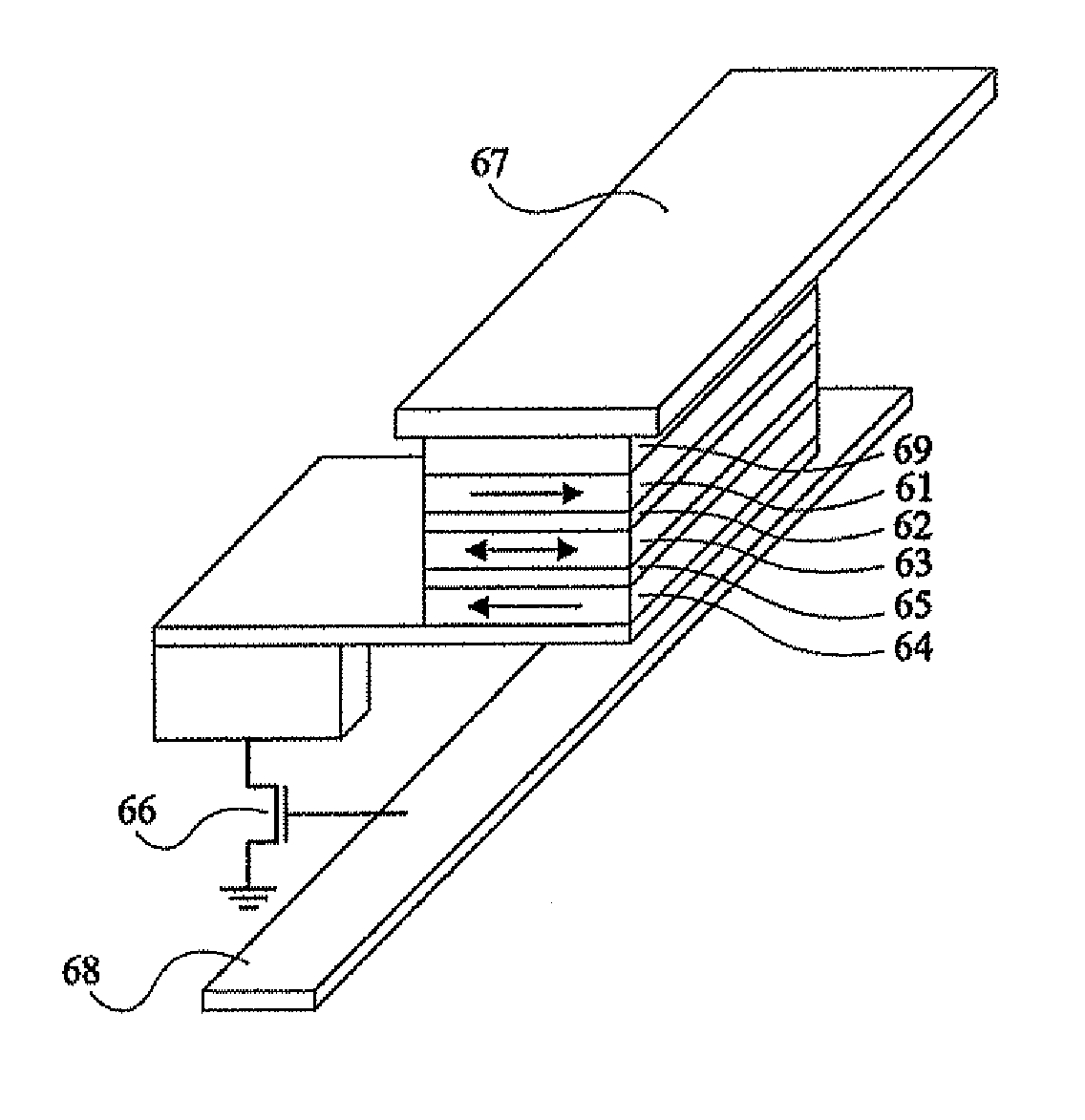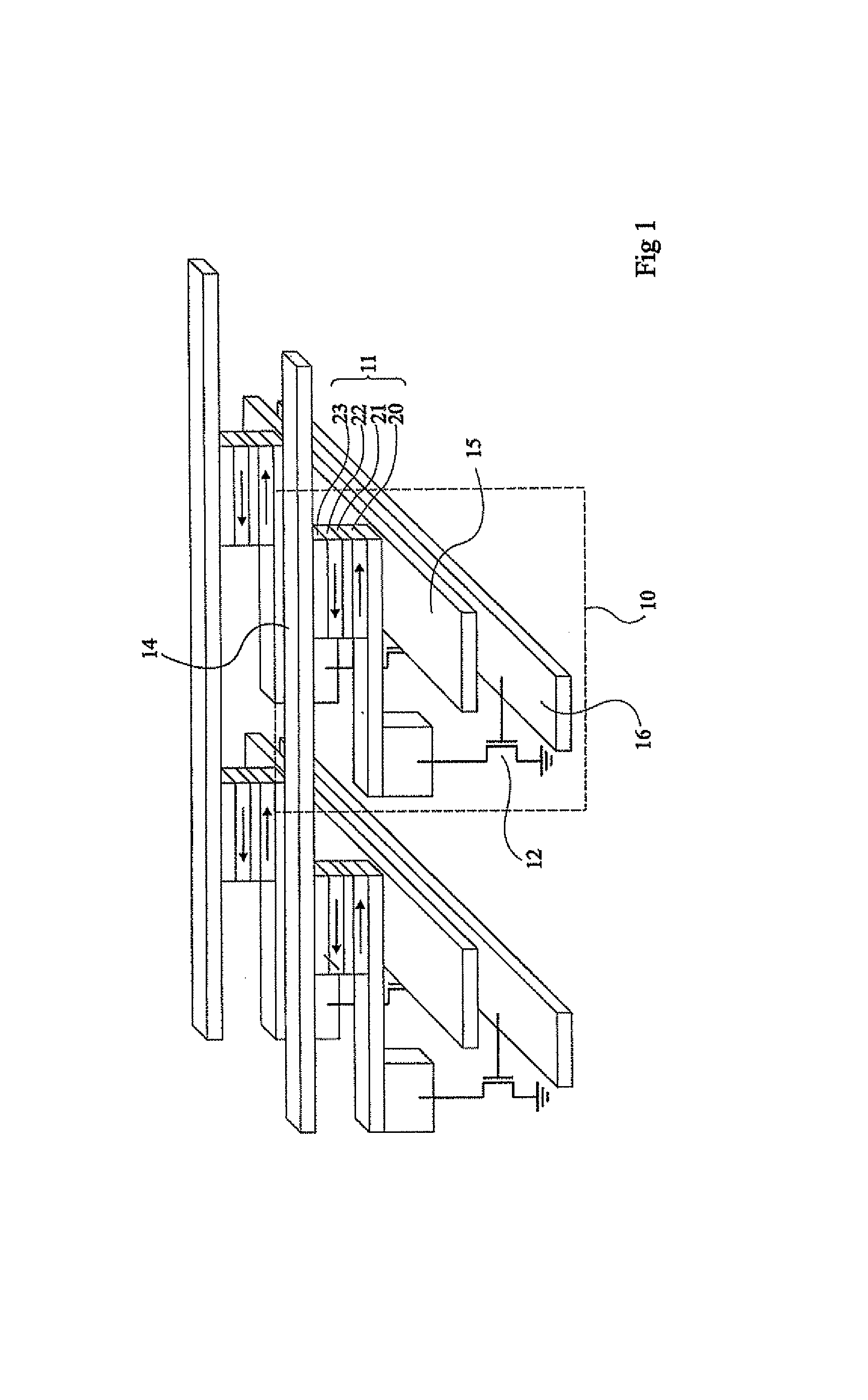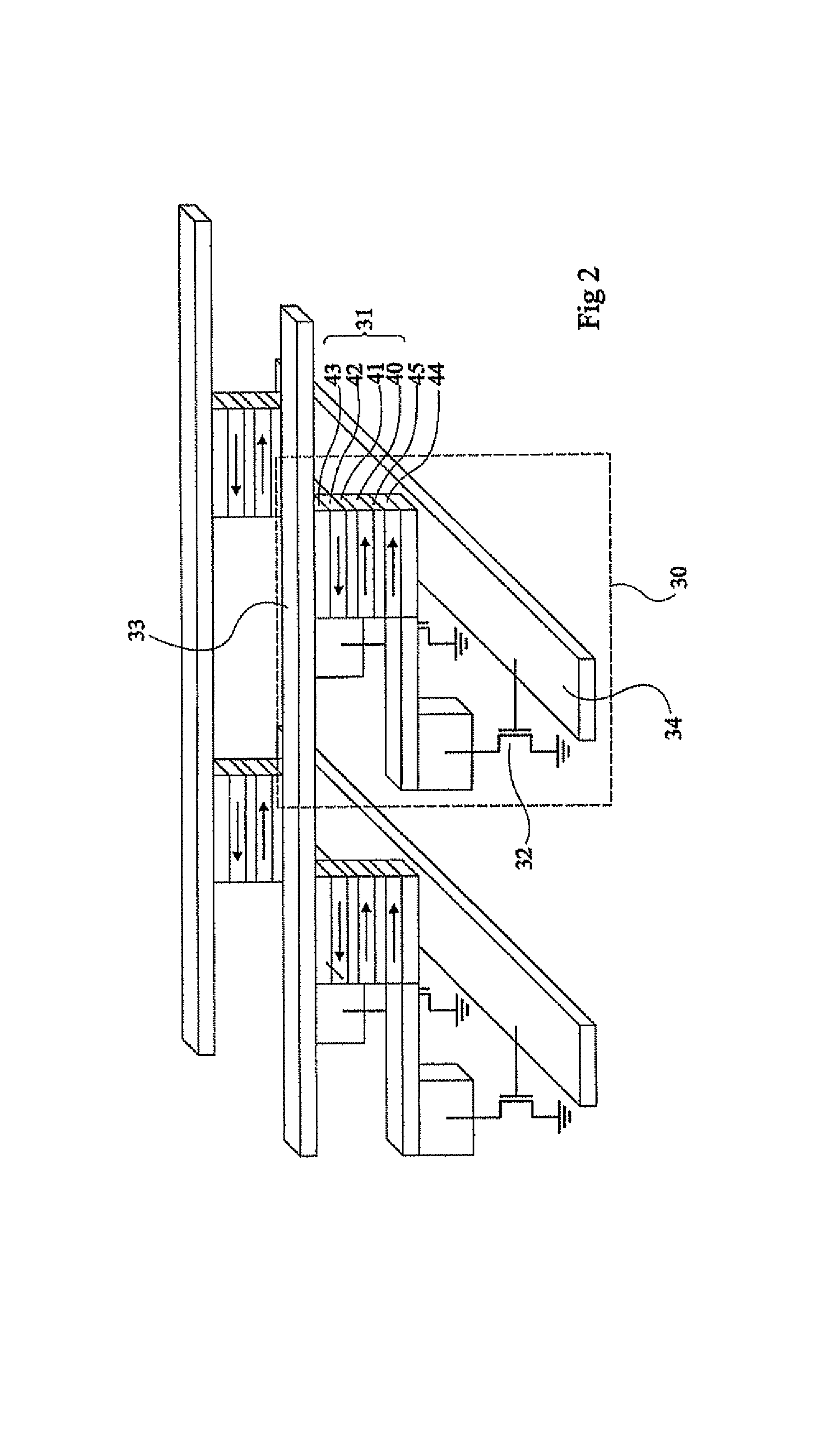Magnetic memory with spin-polarized current writing, using amorphous ferromagnetic alloys, writing method for same
a writing method and magnetic memory technology, applied in the field of magnetic memories, can solve the problems of limiting integration possibilities, aging problems of ferroelectric-based memories, and risk of never writing into the selected memory poin
- Summary
- Abstract
- Description
- Claims
- Application Information
AI Technical Summary
Problems solved by technology
Method used
Image
Examples
Embodiment Construction
[0038]As briefly reminded hereafter, the operation of the memory according to the present invention rests on the use of FAA materials and of the specific properties associated therewith. As can be seen in FIG. 3a, macroscopic magnetization (50) of a layer (55) of an FAA can be resolved into two contributions, one contribution due to rare earth atom sub-lattice (51) and one contribution due to transition metal atom sub-lattice (52). Schematically, macroscopic magnetization (50) results from the vectorial sum of the two sub-lattices (51) and (52).
[0039]Further, the magnetizations of rare earth lattice (51) and of transition metal sub-lattice (52) are strongly coupled together, resulting in a joint behavior upon switching of macroscopic magnetization (50) or reorientation by a selective excitation of one of sub-lattices (51) and (52).
[0040]Further, when the chemical nature and the relative composition of the rare earth and of the transition metal are judiciously selected, the magnetic ...
PUM
| Property | Measurement | Unit |
|---|---|---|
| size | aaaaa | aaaaa |
| breakdown voltages | aaaaa | aaaaa |
| magnetization | aaaaa | aaaaa |
Abstract
Description
Claims
Application Information
 Login to View More
Login to View More - R&D
- Intellectual Property
- Life Sciences
- Materials
- Tech Scout
- Unparalleled Data Quality
- Higher Quality Content
- 60% Fewer Hallucinations
Browse by: Latest US Patents, China's latest patents, Technical Efficacy Thesaurus, Application Domain, Technology Topic, Popular Technical Reports.
© 2025 PatSnap. All rights reserved.Legal|Privacy policy|Modern Slavery Act Transparency Statement|Sitemap|About US| Contact US: help@patsnap.com



